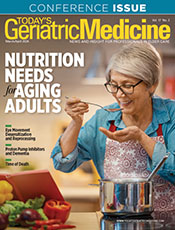
March/April 2024
March/April 2024 Issue Editor’s Note: Care for the Dying Health care providers in a variety of settings, from home care to hospital care, are no strangers to patients who are dying. Yet many are uncomfortable in that role or unprepared, either because they haven’t been taught or allowed to acknowledge the emotions associated with death—not only the patients’ but their own distress as well—or because they haven’t had adequate opportunity to be fully educated about the entire spectrum of the death experience. While they may be well familiar with the signs of impending death and the stages of active dying, they may have little training about the spiritual experience of dying patients or the anxiety and existential dread that may go unaddressed. They may feel out of their depth attending to the loved ones of their dying patients. They may feel helpless in the face of their patient’s suffering and their own discomfort. Gaps exist in the training of residents and physicians. As important as it is for providers to understand, assess, and attend to the biological aspects of dying and help patients make end-of-life decisions, it’s equally important for them to have adequate training in coping with grief—theirs, their patients, and their patients’ loved ones and caregivers. Research from the last decade shows that most doctors report having had little or no such training during their residencies and feeling inadequate or uncomfortable when having end-of-life conversations. Many medical schools are attempting to fill the gap, not merely by providing courses or clinical rotations, but by giving students and residents more opportunities to practice these skills and develop competency in rotations in hospitals, hospices, and long term care. In this issue, Scott Janssen, MA, MSW, LCSW, a hospice social worker, explores the positive impact health care professionals can have on patients as well as their loved ones. He acknowledges the greater awareness among health professionals about the need to have comfortable conversations with dying patients and help them make decisions about quality of life, treatment decisions, and where they want to die. Still, he asks, “But what about when death is imminent, when there are no diagnostics to run, no treatment to schedule?” — Kate Jackson |
